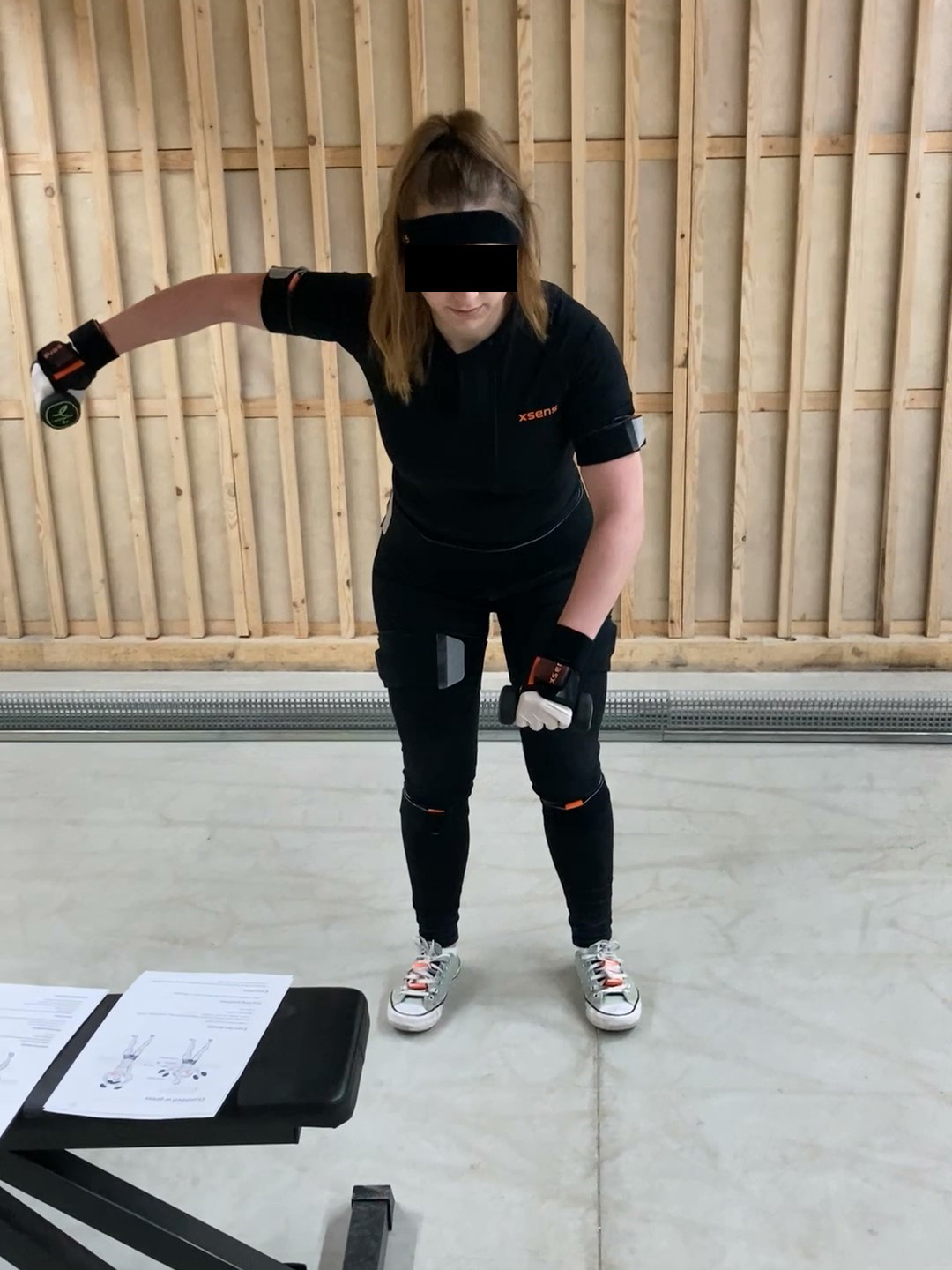Student Projects
Here you can find some of our latest student projects. By hovering over the images you will get some information about the projects. For some projects you will find the thesis attached by clicking the image.
Numerical quantification of rehabilitation programs regarding patellar tracking disorder after implantation of a total knee arthroplasty
Michael Kögler
Preventing the development of the Upper- Crossed Syndrome with targeted exercises to strengthen weakened muscles
Evelyn Husser
The influence of shoes with different restrictions of the foot motion on joint reaction forces
Ina Adler

About 20 percent of patients after total knee arthroplasty (TKA) suffer from persistent anterior knee pain, which can be related to a patella tracking disorder. Physical therapy is often the first choice of treatment options. This study analyzes the best and worst muscle recruitment aiming to find the optimum treatment routine following TKA to reduce mediolateral forces. A parameter study is conducted to determine the optimum muscle configuration. In addition, the influence of varying varus-valgus positions after implantations is analyzed in two different muscle models, the above mentioned and a full Hill model. The main aspect of the study – the variation of muscle strength – is practiced in the simplest conceivable muscle model in Anybody, not influenced by the contraction velocity and current muscle length. Optimum configurations differ between pre- and postsurgery simulations.

The Upper-Crossed Syndrome is a chronic, inflammatory and degenerative disease of the musculoskeletal system. An unnatural and / or permanently static posture and repetitive movement patterns lead to incorrect loading on the body. As a result, the locomotor apparatus reacts by adapting the muscles. An imbalance between weakened and tense muscle groups becomes persistent. This imbalance can lead to the development of musculoskeletal conditions. However, this muscular mismatch can be improved by specifically strengthening the weakened muscles. The aim of this sports study is to identify exercises that specifically strengthen muscles that are weakened in the Upper-Crossed syndrome. Therefore, possibly preventing the development of an imbalance and subsequently, the development of such condition.

As small changes in environmental components can affect the whole gait pattern, it is important to understand the influence of as many parameters as possible to perform a representative gait analysis. One of these parameters, which is in most gait studies typically left out, is the type of shoes that are worn during the study. The objective of this work was to test the hypothesis if the more the range of motion of the ankle is restricted by a shoe, the greater is the Joint Reaction Force (JRF) in the ankle and knee joint. The observed shoe types were sneakers, boots and high heels in comparison to a barefoot condition. 12 healthy young women each performed three level walking trials per footwear condition on a 15 m walkway. A 3D Motion Capture system recorded joint angles, segment kinematics, segment global positions, and extensive sensor data. The resultant JRF were calculated from inverse dynamics.
Development of an experimental set-up and evaluation for testing alveolar ridge distractors on mechanical stress and creep behavior
Julia Schwar

With this study, mechanical displacements or creep behavior caused by pressure forces on alveolar distractors are investigated by using mechanic tests. The assertion is, that the distractor shows some kind of deformation under cyclic and constant strain in the middle part of the implant, in the transport axis, in the center as well as in the connection to the side parts, in both the base plate and the transport segment. To prove or disprove that hypothesis mechanical tests were taken. A testing station was constructed by using an Instron E3000 for load and cyclic tests. Artificial corticalis bone was used with original micro screws to fix the distractor first. Both devices were manufactured by KLS Martin Group and are made out of titan alloy. Also, two aluminum angle pieces were constructed to minimalize the deformation caused by the connection between the screw and the support material. After several elastic testings destructive tests were also performed to determine the maximum load and the weak spot. To see some kind of creep behavior, long term dynamic load tests were executed up to 5000 cycles.
